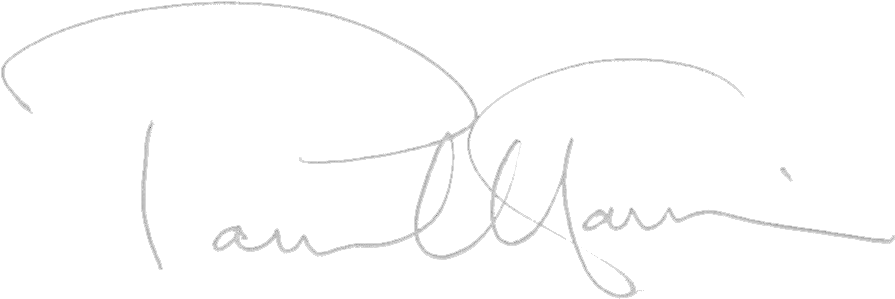In the Summer of 2000 I had the great pleasure of meeting James Gillespie, editor of The Clarinet Journal, during the International Clarinet Association (ICA) convention in Oklahoma. James asked me if I would like to contribute a regular column – an invitation that I found both humbling and daunting! The following ‘Letter from the UK’ was first published in December 2004 in The Clarinet Journal, the official publication of the ICA.
It’s certainly been a busy few months since my last letter. The launch of my biography Malcolm Arnold: Rogue Genius was quite an experience, taking place at the Royal Festival Hall in London. Among the two hundred guests were four players from the London Philharmonic Orchestra, class of 1940! And also the clarinettist Nick Tschaikov, who played in very early performances of Arnold’s Three Shanties and the wonderful (and recently re-discovered) Wind Quintet back in 1942. The latter received its first London performance (sixty-two years late!) by a wonderful pupil of mine, Charlotte Swift, and some friends during the launch. In the following concert by the LPO, Julian Bliss gave a masterly performance of Malcolm’s Second Concerto. The spirit of Benny Goodman was clearly with us, although sadly Malcolm himself wasn’t, as he is getting very frail. However I did pay him a visit on his 83rd birthday last week and found him alert and cheerful.
A couple of weeks earlier I was in Berlin to celebrate another birthday; that of the Clarinet, which is 300! Karl Leister and the Musikinstrumenten-Museum were not going to let the occasion go without an appropriate and full-scale celebration. The exhibition and symposium observing this important anniversary was given a wonderful launch on September 30th. My own part in this tremendous event actually began about a year ago. Karl rang me one morning and asked whether I would be willing to write a short piece for the occasion. Needless to say I was honoured to do so. But my short Happy Birthday Clarinet was to have a dual purpose, as the patron of the festival, Alan Hacker, also celebrated his birthday the same day.
So, a year or so later, I found myself among many distinguished guests assembling in the lower floor of the Museum with its fabulous collection of decorated eighteenth-century harpsichords standing guard over cabinets of historical instruments. The Faszination Klarinette exhibition spans two floors – the lower floor is home to displays of the chalumeau family and the earliest extant examples of the clarinet itself. (There used to be more, but many of these went up in smoke during World War Two.) Here are the few surviving Denner instruments – brought from all around the world, and lovingly cared for. Something that particularly caught my attention was a large chunk of an African Blackwood tree – I’d never seen a clarinet in quite that early stage of evolution before! On the first floor, displays bring us through the nineteenth and into the twentieth century. I was particularly excited to see two examples by Ottensteiner, the maker of Richard Mühlfeld’s instruments. There are also cabinets containing some of the more exotic, and now sadly extinct members of the clarinet family – how disappointing that some of these extraordinary looking devices are no longer entertaining audiences. There is Theodor Lotz’s wonderfully angular Bassetthorn in F; Franz Kruspe’s Bathyphon, looking like something midway between a clarinet and a contra-bassoon; and perhaps most extraordinary of all, Fritz Schüller’s Viertelton-Doppelklarinette – two clarinets in one, with an absolutely awe-inspiring array of complex key-work that makes a standard Boehm system instrument look positively primitive.
The launch ceremony began with Alan Hacker playing two Marches by Telemann on a copy of a Jacob Denner instrument. There were moments when it clearly sounded like the mock-trumpet it was probably meant to. Following this, we heard two more Marches, now on a copy of a Zencker. Alan chose to play them using the high tessitura and the vocal qualities of the instrument were now much more to the fore. A number of speeches followed though frustratingly, my German was not really up to it. Alan himself gave a very engaging and personal account (in English!) of the instrument’s history and then the four members of the clarinet section of the Berlin Philharmonic Orchestra took up their position on the platform to play my contribution. It is really a set of variations on Happy Birthday and (although it’s an old joke) I’ve tried to metamorphose snippets of all the most well-known clarinet melodies – from Weber to Finzi, Brahms to Stravinsky, by way of Mozart, Hindemith, Poulenc and many others into the famous birthday ode. Of course they played it very well, the audience seemed pleased, and Alan particularly so – it was a complete surprise to him!
More speeches followed and the launch was rounded off by some fantastic jazz. Dan Levinson and his trio played in the style of Benny Goodman and the audience, made up mostly of international clarinet players, applauded delightedly. The exhibition was then officially opened by the Museum’s director, Professor Dr. Conny Restle and the Chief Curator, Heike Fricke and the assembled gathering began enthusiastically investigating the exhibits. There is also a superb accompanying catalogue, beautifully produced. Drinks then followed and there were many wonderful people to chat to. I was particularly excited to meet Dieter Klöcke – a player and teacher for whom I have long had a great regard. The symposium went on for three days and included talks by distinguished members of the clarinet fraternity and concerts given by world-renowned artists in works from Mozart to Stockhausen. It was a wonderfully memorable event. The exhibition itself remains open until the end of February and, if you find yourself anywhere near Europe, it is highly recommended.

